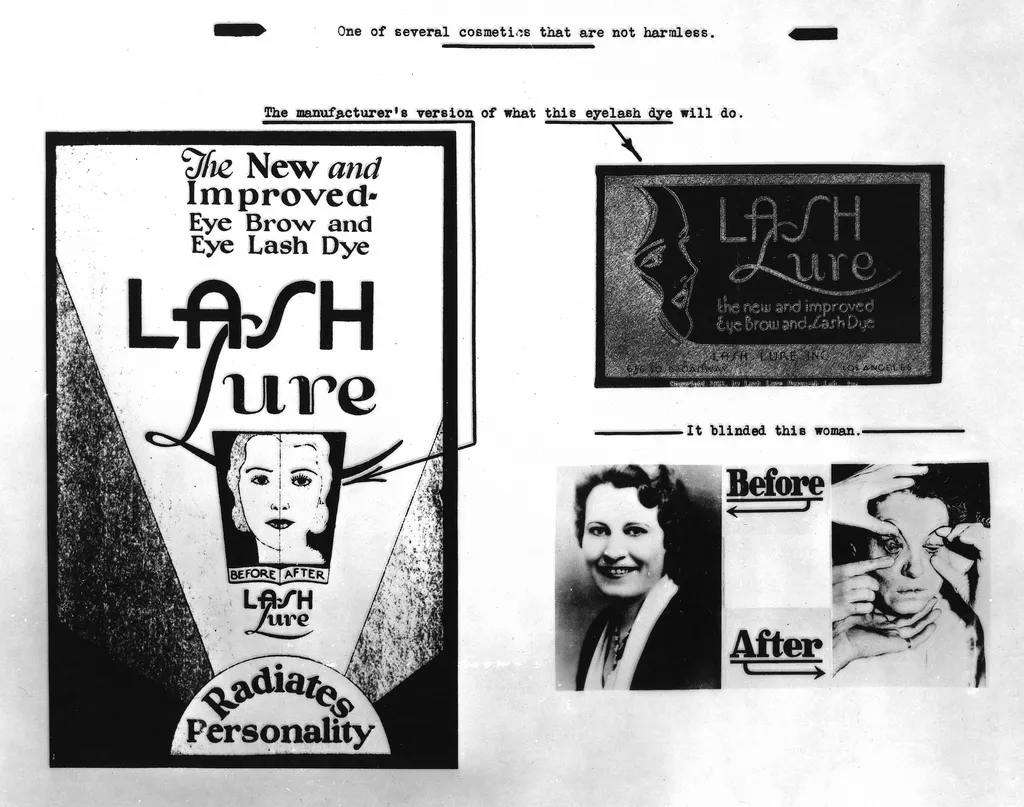Three Horrifying Pre-FDA Cosmetics
From mercury-loaded face cream to mascara that left you blind
/https://tf-cmsv2-smithsonianmag-media.s3.amazonaws.com/filer/9b/0e/9b0eb578-d457-4a4c-a44c-efc78c065918/32947457850_63464a1e0a_k.jpg)
This week in 1938, the Food, Drug and Cosmetic Act was passed. An improvement on the 1906 Pure Food and Drug Act, it represented the first time that cosmetics were regulated at a federal level.
The 1938 act, which took years to pass because of industry resistance, defined what could be considered a cosmetic and what it could not contain (including “insanitary ingredients,” according to one legal scholar.) It created basic provisions such as requiring “colors to be certified as harmless and suitable by the FDA for their use in cosmetics,” writes the modern FDA.
Of course, that didn’t mean companies weren’t still going to develop products that hurt cosmetics-wearers. But it did mean that they could be taken off the market, where before they flourished totally unchecked. Take a look at a few of these pre-FDA horrors:
Koremlu
Koremlu advertised itself as a safe and permanent hair-removing cream. What it actually did, though, was poison its users. “Even though Koremlu was applied mostly to women’s upper lips, the problems manifested themselves elsewhere,” writes historian Gwen Kay. Women lost hair all over their bodies as well as suffering from paralysis and even damage to their eyes, she writes.
One of Koremlu’s active ingredients was thallium acetate. Thallium was also used as rat poison, but has since been banned in the U.S. due to how toxic it is even to people and animals exposed accidentally. Koremlu didn’t stay on the market, but it was no thanks to the FDA. The Journal of the American Medical Association, which in 1932 described the product as “a viciously dangerous depilatory,” led the diagnostic fight against Koremlu by publishing a series of articles about its effects.
Women who suffered the side-effects of the popular product sued the company, forcing it into bankruptcy in 1932 after winning more than $2.5 million in damages. But the FDA, when consulted, could only refer people to JAMA’s work, as Koremlu didn’t qualify as a drug and the agency did not yet have the power to regulate cosmetics.
Lash Lure
This 1933 mascara promised to give women that permanently made-up look using aniline dye on eyelashes. Unfortunately, some women eager to take the company up on this ended up blind.
Lash Lure contained a chemical known as p-phenylenediamine. According to the authors of Science, Medicine, and Animals, it “caused horrific blisters, abscesses and ulcers on the face, eyelids and eyes of Lash Lure users, and it led to blindness for some. In one case, the ulcers were so severe that a woman developed a bacterial infection and died.” This 1933 incident has been directly linked to the passage of the 1938 Act: Before and after images of one of the women blinded by Lash Lure were included in an FDA display called the “Chamber of Horrors” that was part of the 1933 Chicago World’s Fair, demonstrating the need for further regulation.
“Lash Lure was the first product forcibly removed from store shelves after the act’s passage,” writes author Mark Bartholomew.

Gouraud’s Oriental Cream
This skin cream, which advertised itself as a “magic beautifier,” did exactly the opposite. A 1936 book inspired by the “Chamber of Horrors” and written by the FDA's chief education officer, Ruth de Forest Lamb, described the effects, according to Tina Sigurdson for the Environmental Working Group. The woman “developed dark rings around her eyes and neck, followed by bluish black gums and loose teeth.” She was suffering from mercury poisoning caused by the cream–which had been on the market for decades. It contained calomel, a mercury compound.
Gouraud’s and many other anti-blemish products relied on mercury compounds for their kick, writes author Richard M. Swiderski. After the act was passed, manufacturers were forced to look elsewhere.